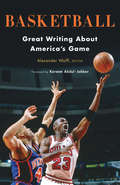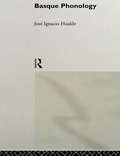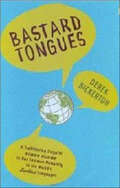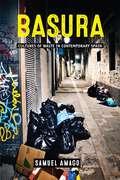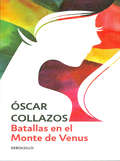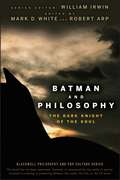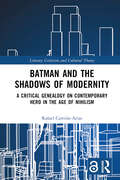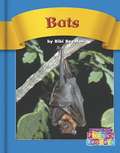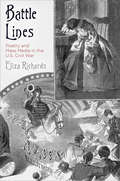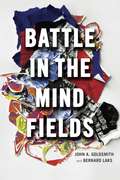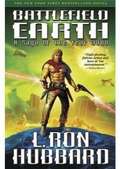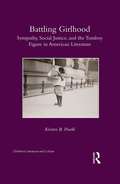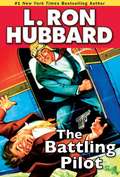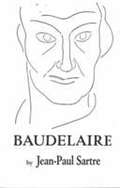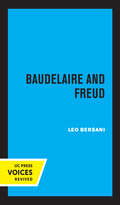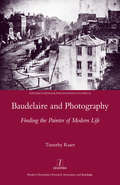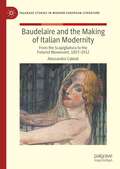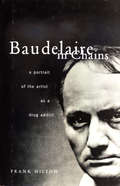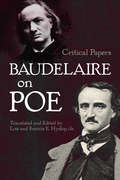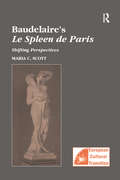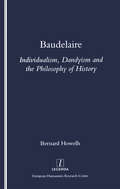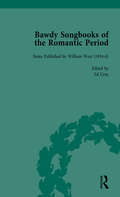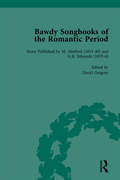- Table View
- List View
Basketball: Great Writing About America's Game
by Alexander WolffFrom the street game to March Madness to Jordan and LeBron, the greatest writing about the grit, grace, and glory of basketballMade in America, basketball is a sport that stirs a national passion, reaching fever pitch during the NCAA's March Madness and the NBA Finals. Masterfully assembled by longtime Sports Illustratedwriter Alexander Wolff, Basketball spans eight decades to bring together a dream team of writers as awe-inspiring and endlessly inventive as the game itself. Here are in-depth profiles of the legends of the hardcourt--Russell, Kareem, Bird, Jordan, and LeBron--and storied franchises such as the Knicks and Celtics, along with dazzling portraits of the flash and sizzle of playground ball and more personal reflections on the game by some of America's finest writers, among them Donald Hall, John Edgar Wideman, and Pat Conroy. Highlights include James Naismith recalling how he invented the game that would go on to conquer the world; John McPhee capturing the ever-disciplined Bill Bradley as a Princeton Tiger; Peter Goldman's indelible portrait of the life and death of a Harlem Globetrotter; and Michael Lewis's account of the brave new world of NBA analytics. Classic journalism about inner-city basketball by Pete Axthelm, Rick Telander, and Darcy Frey is joined by stories of the game's popularity across America, from the heartland of Hoosier country to an Apache Reservation in Arizona.
Basque Phonology
by José Ignacio HualdeThis book is the first comprehensive treatment of the phonological system of Basque available in English. Basque is a morphologically rich and fairly regular language with a number of active phonological rules that are limited to certain morphological environments. In addition, it has a high degree of dialectical fragmentation. These characteristics of Basque make this language a good test ground to investigate the interaction of phonological rules both with each other and with morphological processes, which the author does within the Lexical Phonology framework. The effects of rule interaction on feature geometry are a major concern - how phonological operations modify underlying structures and how the structures created by one phonological rule can serve as input to other rules. These effects are examined in a study of the rather peculiar behaviour of Basque affricates. Another area which requires particular attention, and in which Basque dialects differ widely, is prosody. Along with stress-accent systems of different types, Basque also possesses pitch-accent or restricted tonal systems in some of its western dialects. This book should be of interest to advanced students and teachers of linguistics, especially Romance linguistics and lexical phonology.
Bastard Tongues: A Trailblazing Linguist Finds Clues to Our Common Humanity in the World's Lowliest Languages
by Derek BickertonWhy Do Isolated Creole Languages Tend to Have Similar Grammatical Structures?Bastard Tongues is an exciting, firsthand story of scientific discovery in an area of research close to the heart of what it means to be human—what language is, how it works, and how it passes from generation to generation, even where historical accidents have made normal transmission almost impossible. The story focuses on languages so low in the pecking order that many people don't regard them as languages at all—Creole languages spoken by descendants of slaves and indentured laborers in plantation colonies all over the world. The story is told by Derek Bickerton, who has spent more than thirty years researching these languages on four continents and developing a controversial theory that explains why they are so similar to one another. A published novelist, Bickerton (once described as "part scholar, part swashbuckling man of action") does not present his findings in the usual dry academic manner. Instead, you become a companion on his journey of discovery. You learn things as he learned them, share his disappointments and triumphs, explore the exotic locales where he worked, and meet the colorful characters he encountered along the way. The result is a unique blend of memoir, travelogue, history, and linguistics primer, appealing to anyone who has ever wondered how languages grow or what it's like to search the world for new knowledge.
Basura: Cultures of Waste in Contemporary Spain (Under the Sign of Nature)
by Samuel AmagoWhat makes trash trash? How do we decide what to throw away? Driven by these questions and others, Samuel Amago takes us through the streets and alleys of Spain, sorting through recycling bins, libraries, social media, bookstores, and message boards in search of things that have been forgotten, jettisoned, forsaken. Ranging in topic from the transformation of urban space during the transition to democracy to a twenty-first-century sanitation strike that paralyzed Madrid for weeks, from the films of Pedro Almodóvar to graphic novels about Spain’s housing crisis, Basura presents an alternative story of contemporary Spanish culture through the lens of wasted things.Not merely an environmental problem, the proliferation of trash is an indicator of the social, political, and economic processes that undergird late, neoliberal capitalism. In chapters on cinema, photography, archaeology, drawing, comics, literature, ecology, and urban design, Amago places waste objects into dialogue with the cultural practices and structures of power that have produced them. Drawing from archaeological, ecocritical, and new materialist approaches, Amago argues that discards possess agency and generate an array of effects. Just as trash never fully disappears but returns to haunt its creators, so history never vanishes despite being buried or ignored by official narratives. Basura considers the efforts of artists, writers, and designers for whom waste is a means to withstand cultural erasure.
Batallas en el monte de Venus
by Óscar CollazosÓscar Collazos hace una literatura imaginativa, dramática yque sigue haciéndose cargo de cier tos procesos sociales.Noé Jitrik, Clar Cuando se acerca a la pubertad, Verónica Oropeza recibe esta lección desu madre: #La debilidad de los hombres será tu fortaleza#. No esextraño: siguiendo esa pauta, cultivando su belleza y midiendo el poderdel sexo, Virginia viuda de Oropeza ha logrado dejar atrás sus orígeneshumildes y ha ido escalando posiciones en la sociedad. Pero Verónicaparece entender la sentencia de su madre más como una advertencia quecomo una enseñanza, y se labra su propio destino.En torno a ambas mujeres gira Batallas en el Monte de Venus, un retratoimplacable de una cultura super?cial, corrupta y sometida por el dinerofácil. <P><P>Óscar Collazos hace una literatura imaginativa, dramática yque sigue haciéndose cargo de cier tos procesos sociales.Noé Jitrik, Clar Cuando se acerca a la pubertad, Verónica Oropeza recibe esta lección desu madre: #La debilidad de los hombres será tu fortaleza#. No esextraño: siguiendo esa pauta, cultivando su belleza y midiendo el poderdel sexo, Virginia viuda de Oropeza ha logrado dejar atrás sus orígeneshumildes y ha ido escalando posiciones en la sociedad. Pero Verónicaparece entender la sentencia de su madre más como una advertencia quecomo una enseñanza, y se labra su propio destino.En torno a ambas mujeres gira Batallas en el Monte de Venus, un retratoimplacable de una cultura super?cial, corrupta y sometida por el dinerofácil. <P><P>Óscar Collazos hace una literatura imaginativa, dramática yque sigue haciéndose cargo de cier tos procesos sociales.Noé Jitrik, Clar Cuando se acerca a la pubertad, Verónica Oropeza recibe esta lección desu madre: #La debilidad de los hombres será tu fortaleza#. No esextraño: siguiendo esa pauta, cultivando su belleza y midiendo el poderdel sexo, Virginia viuda de Oropeza ha logrado dejar atrás sus orígeneshumildes y ha ido escalando posiciones en la sociedad. Pero Verónicaparece entender la sentencia de su madre más como una advertencia quecomo una enseñanza, y se labra su propio destino.En torno a ambas mujeres gira Batallas en el Monte de Venus, un retratoimplacable de una cultura super?cial, corrupta y sometida por el dinerofácil.
Batman and Philosophy: The Dark Knight of the Soul
by Mark D. White Robert ArpIs Batman better than Superman? If everyone followed Batman's example, would Gotham be a better place? What is the Tao of the Bat? Batman is one of the most complex characters ever to appear in comic books, graphic novels, and on the big screen.
Batman and the Shadows of Modernity: A Critical Genealogy on Contemporary Hero in the Age of Nihilism (Literary Criticism and Cultural Theory)
by Rafael Carrión-AriasThis book aims to study the Batman narrative, or Bat-narrative, from the point of view of its nodal relationship to modern narrative. To this end, it offers for the first time a new type of methodology adequate to the object, which delves both into materials scarcely studied in this context and well-known materials seen in a new light. This is a multidisciplinary work aimed at both the specialist and the global reader, bringing together comic studies, philosophical criticism, and literary criticism in a debate on the fate of our current global civilization.
Bats
by Bibi BoyntonPhonics Readers is a recognized leader in helping you teach phonics and phonemic awareness, within the context of content-area reading. Content area focus: Bats Phonics Skills: long i (i, igh, y), homophones
Battle Lines: Poetry and Mass Media in the U.S. Civil War
by Eliza RichardsDuring the U.S. Civil War, a combination of innovative technologies and catastrophic events stimulated the development of news media into a central cultural force. Reacting to the dramatic increases in news reportage and circulation, poets responded to an urgent need to make their work immediately relevant to current events. As poetry's compressed forms traveled more quickly and easily than stories, novels, or essays through ephemeral print media, it moved alongside and engaged with news reports, often taking on the task of imagining the mental states of readers on receiving accounts from the war front. Newspaper and magazine poetry had long editorialized on political happenings—Indian wars, slavery and abolition, prison reform, women's rights—but the unprecedented scope of what has been called the first modern war, and the centrality of the issues involved for national futures, generated a powerful sense of single-mindedness among readers and writers that altered the terms of poetic expression.In Battle Lines, Eliza Richards charts the transformation of Civil War poetry, arguing that it was fueled by a symbiotic relationship between the development of mass media networks and modern warfare. Focusing primarily on the North, Richards explores how poets working in this new environment mediated events via received literary traditions. Collectively and with a remarkable consistency, poems pulled out key features of events and drew on common tropes and practices to mythologize, commemorate, and ponder the consequences of distant battles. The lines of communication reached outward through newspapers and magazines to writers such as Dickinson, Whitman, and Melville, who drew their inspiration from their peers' poetic practices and reconfigured them in ways that bear the traces of their engagements.
Battle in the Mind Fields
by John A. Goldsmith Bernard Laks“We frequently see one idea appear in one discipline as if it were new, when it migrated from another discipline, like a mole that had dug under a fence and popped up on the other side.” Taking note of this phenomenon, John Goldsmith and Bernard Laks embark on a uniquely interdisciplinary history of the genesis of linguistics, from nineteenth-century currents of thought in the mind sciences through to the origins of structuralism and the ruptures, both political and intellectual, in the years leading up to World War II. Seeking to explain where contemporary ideas in linguistics come from and how they have been justified, Battle in the Mind Fields investigates the porous interplay of concepts between psychology, philosophy, mathematical logic, and linguistics. Goldsmith and Laks trace theories of thought, self-consciousness, and language from the machine age obsession with mind and matter to the development of analytic philosophy, behaviorism, Gestalt psychology, positivism, and structural linguistics, emphasizing throughout the synthesis and continuity that has brought about progress in our understanding of the human mind. Arguing that it is impossible to understand the history of any of these fields in isolation, Goldsmith and Laks suggest that the ruptures between them arose chiefly from social and institutional circumstances rather than a fundamental disparity of ideas.
Battlefield Earth: A Saga of the Year 3000
by L. Ron HubbardSuspense, politics, war, humor and intergalactic finance. A towering masterwork of science fiction adventure and one of the best-selling science fiction novels of all time, L. Ron Hubbard's Battlefield Earth opens with breathtaking scope on an Earth dominated for 1,000 years by an alien invader and man is an endangered species. From the handful of surviving humans a courageous leader emerges Jonnie Goodboy Tyler, who challenges the invincible might of the alien Psychlo empire in a battle of epic scale, danger and intrigue with the fate of the Earth and of the universe in the tenuous balance. "Tight plotting, furious action and have at'em entertainment." --Kirkus Review
Battling Doubt: How to Push Beyond Your Final Barriers and Finish Your Book
by John VorhausIf you're nearly finished with your novel, you may be staring down one of the writer's toughest foes: doubt. In "Battling Doubt," John Vorhaus shares his candid advice on assessing whether your book is ready for submission and publication. This exclusive e-book offers practical advice on smoothing out those last few wrinkles, conquering your fears, and celebrating your completed novel. John Vorhaus is the author of some two dozen books, including the outstanding novels Lucy in the Sky and Poole's Paradise, the classic comedy writing textbook The Comic Toolbox, and the unbelievably conceptual A Million Random Words. Strange as that sounds, it's not even the odd part of his resume, for he has also taught and trained writers in thirty-three countries on five continents (at last count) and created television shows in such exotic locales as Romania and Nicaragua. He tweets for no apparent reason @TrueFactBarFact, sells all his works at www.amazon.com/author/jv, and secretly controls the world from www.johnvorhaus.com.
Battling Girlhood: Sympathy, Social Justice, and the Tomboy Figure in American Literature
by Kristen B. ProehlFrom Jo March of Little Women (1868) to Katniss Everdeen of The Hunger Games (2008), the American tomboy figure has evolved into an icon of modern girlhood and symbol of female empowerment. Battling Girlhood: Sympathy, Social Justice, and the Tomboy Figure in American Literature traces the development of the tomboy figure from its origins in nineteenth-century sentimental novels to twentieth- and twenty-first-century literature and film.
Battling Pilot, the
by L. Ron HubbardRiveting, historical accounts of daredevils, pilots and brutal madmen that inspire many of today's cinematic blockbusters. Pilot Peter England's humdrum airplane routine is unexpectedly disrupted when his company reassigns him to transport some special passengers. But when his aircraft gets attacked by a mysterious fighter plane, Peter realizes he's transporting dangerous cargo--a princess seeking to turn the tide of a war! "...these programs burst to life..." Library Journal
Baudelaire
by Jean-Paul Sartre Martin TurnellThe abstractions like Existence and Being, Freedom and Nature are turned into a theory of psychoanalysis, stuck in man's creativity and opposed to Freudian determinism. This theory is put into practice in this book on Baudelaire.
Baudelaire and Freud (Quantum Books)
by Leo BersaniThis title is part of UC Press's Voices Revived program, which commemorates University of California Press’s mission to seek out and cultivate the brightest minds and give them voice, reach, and impact. Drawing on a backlist dating to 1893, Voices Revived makes high-quality, peer-reviewed scholarship accessible once again using print-on-demand technology. This title was originally published in 1977.
Baudelaire and Photography: Finding the Painter of Modern Life
by Timothy RaserWhile Baudelaire's 'Le Peintre de la vie moderne' is often cited as the first expression of our theory of modernism, his choice of Constantin Guys as that painter has caused consternation from the moment of the essay's publication in 1863. Worse still, in his 'Salon de 1859', Baudelaire had also chosen to condemn photography in terms that echo to this day. Why did the excellent critic choose a mere reporter and illustrator as the painter of modern life? How could he have overlooked photography as the painting of modern life? In this study of modernity and photography in Baudelaire's writing, Timothy Raser, who has written on the art criticism of Baudelaire, Proust, Claudel and Sartre, shows how these two aberrations of critical judgment are related, and how they underlie current discussions of both photography and modernism. Timothy Raser is Professor of French at the University of Georgia (USA).
Baudelaire and the Making of Italian Modernity: From the Scapigliatura to the Futurist Movement, 1857-1912 (Palgrave Studies in Modern European Literature)
by Alessandro CabiatiThis book establishes the role of French writer Charles Baudelaire in the formation of paradigms of modernity in Italian poetry between 1857, the year of publication of Baudelaire’s highly influential collection Les Fleurs du Mal, and 1912, when the first anthology of Futurist poetry, I poeti futuristi, was published in Milan. It focuses primarily on Baudelaire’s influence on the poetry of the Scapigliatura, a long-underrated movement which in the 1860s introduced a thematic and formal modernity into Italian literature, paving the way for Futurism and the twentieth-century avant-garde. This monograph also investigates Baudelaire’s and the Scapigliatura’s interrelated impacts on early Futurist poetry, demonstrating that Futurist poets turned to the works of Baudelaire and the Scapigliatura for inspiration on themes that were considered as distinctly unpoetic – and therefore modern – such as medical-anatomical examination, technological transformation, and abnormal sensuality.
Baudelaire in Chains: A Portrait of the Artist as a Drug Addict
by Frank HiltonAn acclaimed and most unusual biography of Baudelaire, showing him ensnared by his passions for poetry, prostitutes, and drugs.A crucial link between romanticism and modernism, Charles Baudelaire is a pivotal figure in European literature and thought. His influence on modern poetry is immense. In the English language, where his literary reputation is less well known, it is his link with drug culture that gives him contemporary resonance. It is commonly known that Baudelaire used opium. Many writers have described him as being addicted to the drug, but none of his biographers, Frank Hilton argues, has fully understood the effect of opiate addiction on the personality and, in the case of Baudelaire, the extent to which it damaged his life and work. In this original contribution to Baudelaire studies Hilton contends that the drug is at the root of all Baudelaire's problems and in particular--something that constantly tormented him--his chronic inability to apply himself to any prolonged creative work. Unquestionably, there is significantly more to Baudelaire than his opium addiction. But a proper awareness of what it did to the poet helps to illuminate those puzzling aspects of his life and behavior that were not previously understood. Written with the general reader in mind, Baudelaire in Chains will give those who know little or nothing about him a comprehensive picture of his life. To those who know a great deal it will present him in an unexpected light.
Baudelaire on Poe: Critical Papers
by Charles Baudelaire Lois And Hyslop Jr.Renowned poet Charles Baudelaire played a significant role in introducing Edgar Allan Poe to French readers by publishing widely read criticisms and translations of Poe's writings. The two writers shared an appreciation for the exotic, a taste for morbid subjects, and a devotion to artistic purity. Baudelaire immersed himself in the study of English for the express purpose of doing justice to Poe's works, and his translations established his reputation in the French literary world well before the publication of his most famous book of poetry, Les Fleurs du Mal.In the first part of this study, "Edgar Allan Poe, His Life and Works," Baudelaire sketches his subject's biography and discusses several representative writings. Two additional essays analyze Poe's literary theories and offer intriguing reflections of Baudelaire's own sense of aesthetics. The compilation concludes with a critical miscellany of several other prefaces and notes on the American author and his works.
Baudelaire's Le Spleen de Paris: Shifting Perspectives
by MariaC. ScottMaria Scott's study of the operation of irony in Baudelaire's Le Spleen de Paris contends that the principal target of the collection's spleen is its own readership. Baudelaire, as one of the most perceptive cultural commentators of the nineteenth century, was naturally very keenly aware of the growing dominance of the bourgeoisie in France, not least as a market for art and literature. Despite being dependent on this market for his own writing, the poet was highly critical of bourgeois values and attitudes. Scott builds on existing criticism of the collection to argue that these are indirectly mocked in Le Spleen de Paris, often in the person of the poet's supposed textual alter ego. The contention is that the prose poems betray the trust of readers by way of an apparent transparency of meaning that functions to blind us to their embedded irony. Though focused on Le Spleen de Paris, Scott's study engages with the full range of Baudelaire's writings, including his art and literary criticism. Her book will be of interest not only to Baudelaire scholars but also to those engaged more generally with nineteenth-century French culture.
Baudelaire: Individualism, Dandyism and the Philosophy of History
by Bernard Howells"These essays take Baudelaire seriously as a thinker. Bernard Howells explores the problematics surrounding individualism and history in a number of prose texts, and situates Baudelaire within the broader contexts of nineteenth-century historical, cultural and artistic speculation, represented by Emerson, Carlyle, Joseph de Maistre, Giuseppe Ferrari and Eugene Chevreul."
Bawdy Songbooks of the Romantic Period, Volume 1
by David Gregory Ed Cray Paul Watt Patrick Spedding Derek B ScottThe songbooks of the 1830-40s were printed in tiny numbers, and small format so they could be hidden in a pocket, passed round or thrown away.Collectors have sought ‘these priceless chapbooks’, but only recently a collection of 49 songbooks has come to light. This collection represents almost all of the known songbooks from the period.
Bawdy Songbooks of the Romantic Period, Volume 2
by David Gregory Ed Cray Paul Watt Patrick Spedding Derek B ScottThe songbooks of the 1830-40s were printed in tiny numbers, and small format so they could be hidden in a pocket, passed round or thrown away.Collectors have sought ‘these priceless chapbooks’, but only recently a collection of 49 songbooks has come to light. This collection represents almost all of the known songbooks from the period.
Bawdy Songbooks of the Romantic Period, Volume 3
by David Gregory Ed Cray Paul Watt Patrick Spedding Derek B ScottThe songbooks of the 1830-40s were printed in tiny numbers, and small format so they could be hidden in a pocket, passed round or thrown away.Collectors have sought ‘these priceless chapbooks’, but only recently a collection of 49 songbooks has come to light. This collection represents almost all of the known songbooks from the period.
